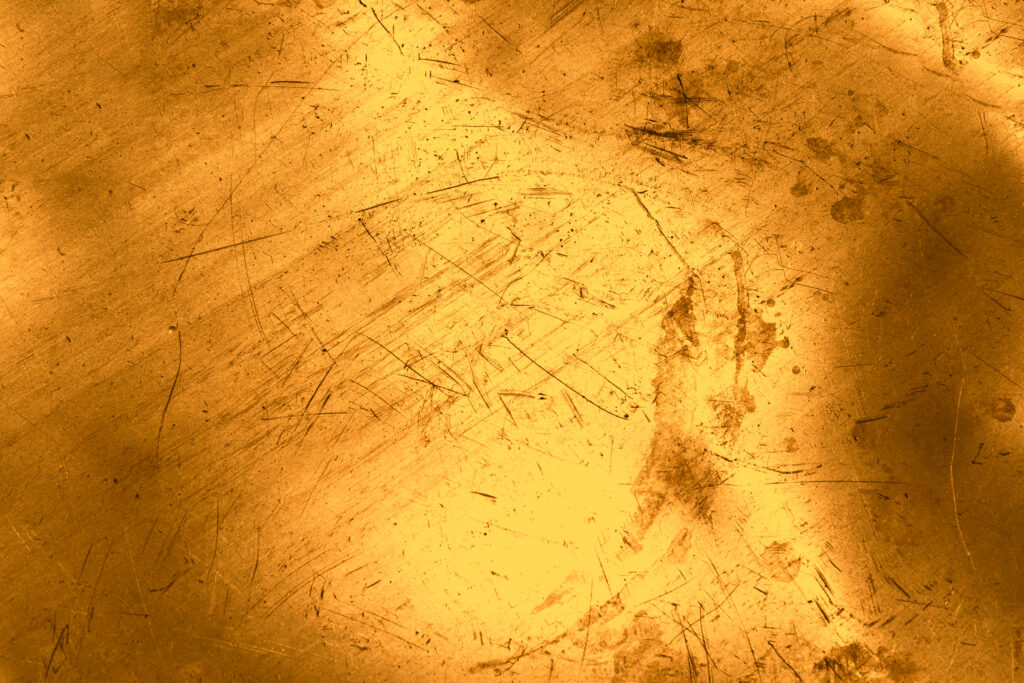Gold is a valuable metal and a popular choice for jewelry pieces. However, you may want to take care in choosing what type of gold you want in jewelry or how often to wear particular pieces.
Gold does scratch and the purer the gold, the more it scratches. This is why jewelry pieces don’t usually use pure gold as it gets scratched easily.

While gold jewelry will likely eventually get scratched at some point, it’s possible to reduce the risk of scratching by choosing particular types of gold.
Different types of gold
When considering gold, it’s important to note that gold comes in various forms. Its purity is measured in karats and one karat is the equivalent of 1/24 part of pure gold according to weight.
The purest form of gold is 24 karats, meaning all 24 parts out of 24 parts are made of pure gold. Gold alloys are a mix of gold and at least one other metal, which means their karat number will be less than 24 karats since these alloys contain less gold.
When considering 18-karat gold, for instance, 18 parts out of 24 in this alloy are pure gold. Different gold alloys will have different colors depending on the metals the gold is mixed with, such as copper creating a reddish tone.
In addition to 24-karat gold and 18-karat gold, other common types of gold include 14-karat gold and 10-karat gold.
When it comes to investment gold such as gold bars or coins, these are often 24K gold. However, 24K gold doesn’t tend to be used often in jewelry because it is not durable enough to withstand regular wear.
Gold on the Mohs scale
The Mohs scale is a scale used to measure the hardness of various materials. In this case, hardness refers to the ability of a material to resist scratches.
The harder a material is, the more scratch resistance it has. Diamond is the hardest natural material on earth with a Mohs rating of 10.
Pure 24K gold on the other hand has a Mohs rating of 2.5, meaning it is very easy to scratch and any materials with a higher Mohs rating will be able to scratch pure gold. As the karat number reduces, the Mohs rating increases, so 18K gold has a rating of 2.75 and 14K gold has a rating of 3-4.
The various metals added to the gold to create these 18K and 14K gold alloys increase their durability and scratch resistance.
Gold used in jewelry
Various types of gold are used in gold jewelry, so it’s important to note the karat number when considering certain pieces. In general, the less pure gold a piece of jewelry contains, the cheaper it should be.
However, price is not the only consideration when it comes to gold jewelry. Pure gold is a soft metal, meaning it scratches easily and can also bend easily.
Many jewelry pieces don’t use pure 24K gold because the metal will scratch and warp easily, deforming the jewelry. While it’s possible to create pieces using pure gold, these pieces are best left for special occasions rather than wearing them every day.
For instance, jewelry such as wedding rings or other items that are worn every day will most likely be made from a gold alloy (such as 18K, 14K, or 10K gold) rather than 24K gold as they will be exposed to regular wear and tear and need sufficient durability to resist damage.
The majority of gold jewelry uses 14K gold as it offers a good balance of durability and gold content. However, 18K gold is still a feasible choice for jewelry pieces that offer high gold purity while remaining practical enough for daily wear.
Of course, this doesn’t mean that gold jewelry under 24 karats won’t get scratched. It will just withstand daily wear better but it will likely at some point still pick up scuffs or scratches.
Can you remove scratches from gold?
It is possible to remove light scratches in gold at home by using a polishing cloth. It is important to ensure the gold is clean before polishing it, which you can do by wiping it with a damp cloth that has been dipped in soapy water or letting it soak in soapy water for a few minutes and then drying the gold.
Once it is clean and dry, use the cloth to polish the gold, making sure to avoid any gemstones the jewelry piece may contain. For deeper scratches, you may need professional polishing services from a jeweler.
A professional will utilize more abrasive materials which will be more effective at removing scratches. However, it’s important to note that whether you are polishing at home or using professional polishing services, the process of polishing involves removing a thin layer of gold in order to even out the surface.
Professional polishing shouldn’t be done more than once or twice a year, though you may only need to do it every two or three years if the jewelry isn’t regularly worn. Polishing at home with a cloth can be done more frequently, such as every two to three months, since this is less abrasive.
